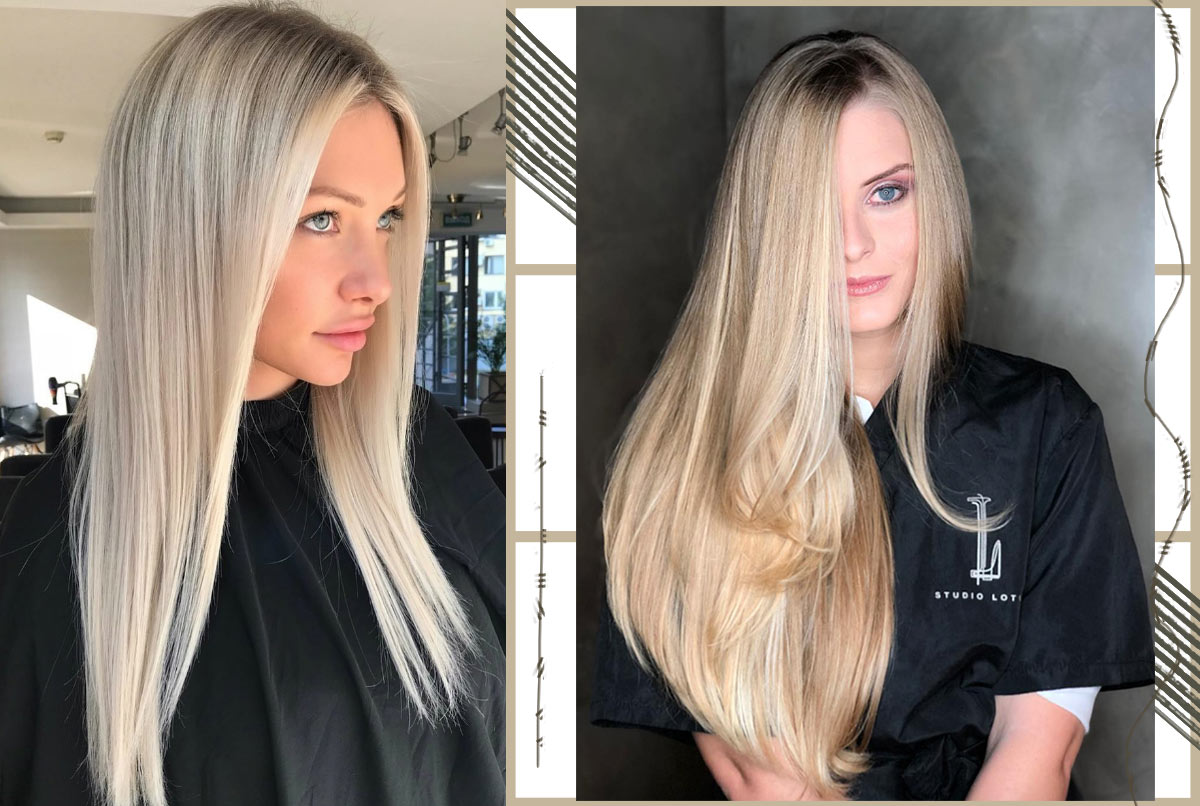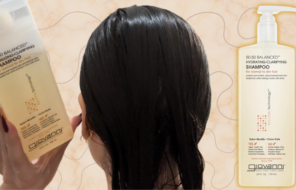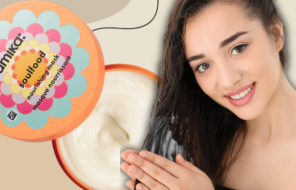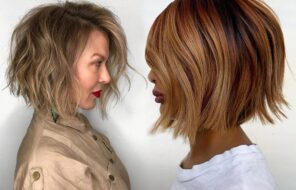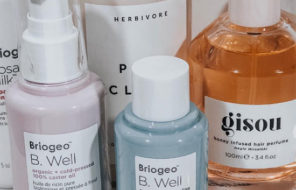There are many different methods to semi-permanent hair straightening, with the Japanese version dominating in certain parts of the world. Sleek and looking perfectly healthy, your tresses will thank you for the look and the effect it will have on those around you. If you wish to get rid of that pesky frizz, minimize the heaviness that comes with thick, long hair, and smooth out those curls, Japanese hair straightening is quite the viable option.
This trend has been gaining popularity all around, from the UK to the US and beyond. In this guide, we take you through the pros and cons of Japanese hair straightening to allow for a more informed decision on your part.
In this article:
- What Is Japanese Hair Straightening?
- Benefits
- Potential Damage
- How Long Does Japanese Hair Straightening Last?
- What Hair Types Benefit from the Treatment?
- Japanese Hair Straightening vs. Brazilian Blowout vs. Keratin Treatment
- What Is the Process?
- Aftercare
- Costs
What Is Japanese Hair Straightening and How Does It Work?
Japanese hair straightening is a semi-permanent hair straightening method, also known as thermal reconditioning, where all waves are flattened through a special chemical solution. It contains cysteine, a sulfur-containing amino acid, which essentially changes the structure of your tresses permanently by breaking the bonds inside each strand.
The solution is applied and left on for around 20 minutes, depending on the hair type and length. Once the bonds are fully disconnected, the product is washed out. This is followed by the straightening process, where the hair is first prepared with conditioners, hydrating and nourishing to ensure strength against any breakage.
Small section after small section is then passed through a straightener at 180 degrees, though the heat level can differ based on the level of damage to the hair before starting the treatment. Once completely ironed, a neutralizer is used to work its magic and speed up the straightening process in less than 10 minutes.
It would then be rinsed out and the hair blow-dried to perfection. No styling brushes are necessary at this point, as the hair should be pin-straight. However, the stylist might pass over it with a straightener one last time to let it sink in even better.
Japanese hair straightening is considered permanent and is extremely popular. It ensures no creases in any of the strands. Sometime in the mid-1990s, this became quite the trend in Japan, moving to America in the 2000s. Salons in New York and Los Angeles were the first to give it a try, and soon it was considered the Holy Grail of permanent hair straightening.
Lately, with the Internet easily pushing this or that style forward, Japanese hair straightening has blown up all over Instagram, TikTok, and other social media. We expect it won’t be dying down anytime soon, despite keratin treatments and the new Brazilian Blowout giving Japanese hair straightening a run for its money.

Japanese Hair Straightening Benefits
There are many benefits to reap from Japanese hair straightening, though the main one is quite obvious:
- Fabulous pin-straight hair without a single crease or curl that lasts longer than most straightening methods
- Silky, glossy look for a long time, with little to no maintenance required
- No frizzing, despite the elements
- Healthier appearance, as if a collagen boost has been given to the strands
- Hair remains straight during and after your shower and perfect to swim with
There are many reasons to get a Japanese straightening treatment, but make sure it is the right thing for you to do before embarking on that particular journey.
Potential Damage Japanese Hair Straightening May Cause
Japanese hair straightening uses a specific chemical process to give you the look you want. These chemicals have been seen to cause damage to colored hair, particularly those dyed above a level five – blonde and bleached. Damaged hair takes to it the worst, even if it’s been dyed dark.
Weak or thin hair doesn’t respond as well to the treatment, either, leading to more thinning, as it might not be able to withstand the heat and chemicals. The stylist is also an important factor, and someone applying too much heat can turn your tresses brittle and have the treatment lead to fall-out.
During your consultation, ensure you disclose all the details about the changes you’ve made to your locks before starting the process. No one likes to see money go down the drain.
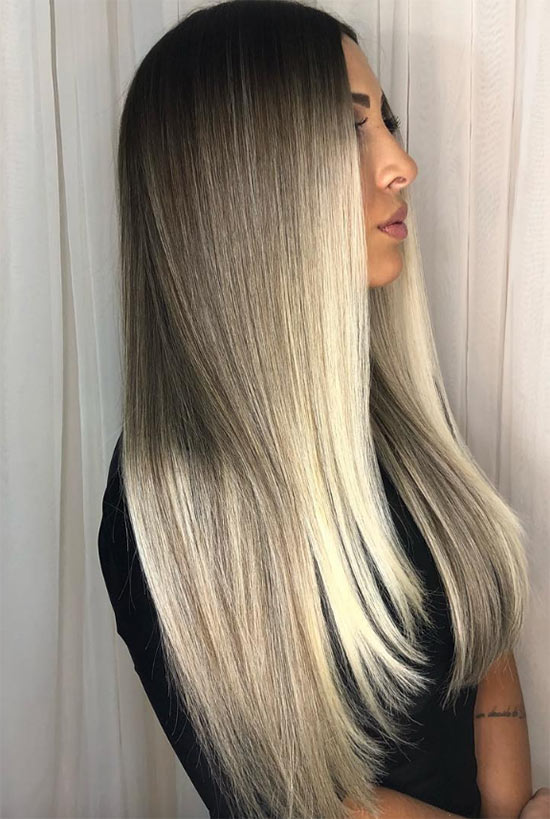
Always visit a professional, and take into consideration that despite everything, you might potentially face hair loss, breakage, and other types of damage through this process. Low chance, if everything is done right, but the risk is there, nonetheless.
We recommend researching well, looking for testimonials by real people on social media, and checking sites such as citysearch.com to help narrow down the salons in your region offering Japanese hair straightening services.
How Long Does Japanese Hair Straightening Last?
As mentioned above, this treatment is considered permanent. Of course, that has a deadline itself, but at least for up to 6 months and even up to a year, you will not need much more than a root touch-up.
It does depend on hair type, of course, but you should mostly find yourself enjoying the effects for around a year. You’ll have to wait for the hair to grow out in order to return to your natural style. It’s a big commitment, so think hard before you decide to take this route.
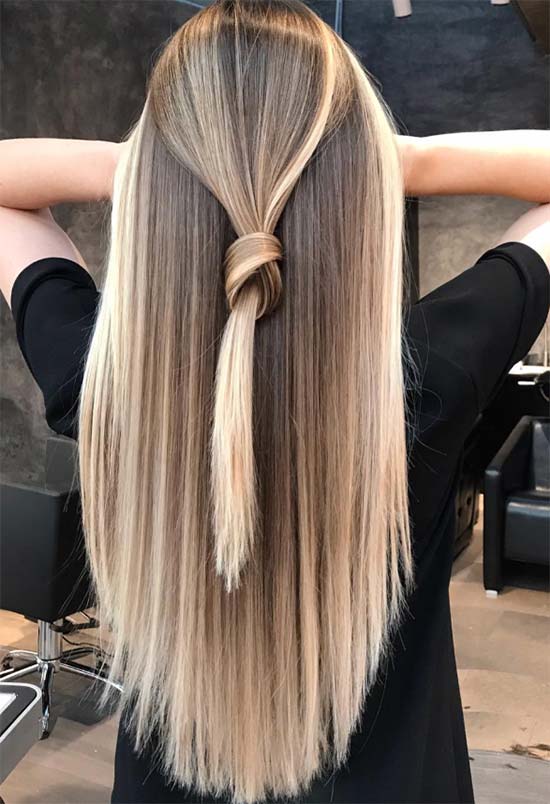
What Hair Types Benefit from Japanese Hair Straightening?
We’ve talked about the damage that can be done to some hair types when using this treatment. However, on a more positive note, we’d like to present the hair types that most benefit from Japanese hair straightening. Once you’ve established that you’re the right fit, go ahead and choose your salon. In the meantime, please make sure you fit these categories.
- Those with strong and healthy hair. The weak and brittle do not take well to the treatment.
- Those who do not color-treat their hair. If you keep things natural normally, your chances of a perfect treatment increase exponentially.
- Those with loose curls and wavy hair will see the best results.
- Those with springy coils will see great results but will need touch-ups often as the hair grows and the roots start curling.
- Those who are not pregnant or nursing will do well. Otherwise, the treatment might potentially cause a hormone imbalance. Talk to your doctor about safety first.
Those who should stay away from this treatment are:
- Those who dye or bleach their hair often. If you’ve done so in the last 6 months, it’s probably better to steer clear for some time. Thermal reconditioning puts enough strain on your strands without them being overwhelmed to breakage. There needs to be enough protein build-up to ensure protection.
- Highlighted hair tends to be tricky to straighten and needs special preparation first, where each shade is rinsed, ironed, and dried. A good stylist will figure it out, so it might help you weed out the inexperienced from the great!
- Those with chemically treated hair, albeit not a dye, should also beware. There’s only so much chemical your strands can take before responding adversely. Be careful with how often you treat your hair. Love your hair before you put it through the stress.
- Those with problems such as hair loss, dandruff, dryness, and natural breakage might opt to steer clear of this one, as well. Your hair needs all the protein it can get, and the Japanese hair straightening treatment chemicals will only strip you of it. Seek advice on fixing the problems first and rejuvenating your hair before going in for thermal conditioning.
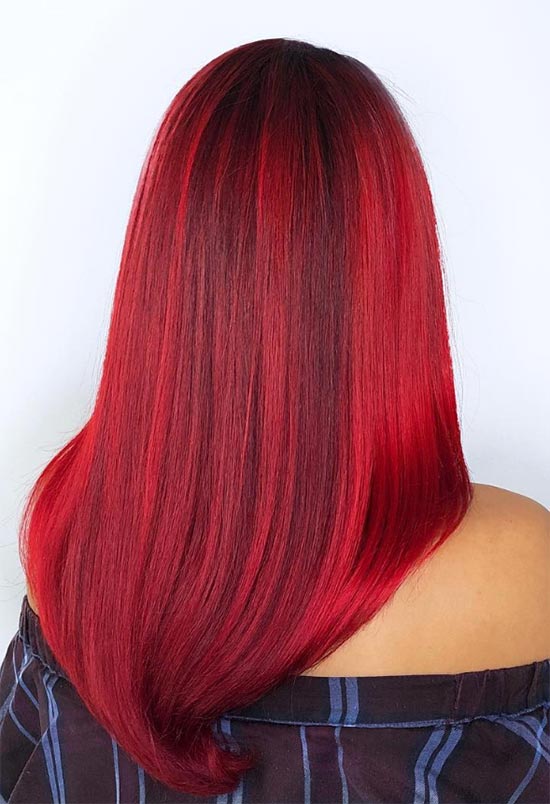
Japanese Hair Straightening vs. Brazilian Blowout vs. Keratin Treatment
It is important to note that with any permanent or semi-permanent hair treatment, you run the risk of falling into the hands of an inexperienced stylist and increasing the possibility of problems arising ten-fold. In ideal situations, all three treatments can be quite perfect, though with differing results. However, not everything can be ideal, and it’s important to minimize the risks.
Brazilian Blowout fanatics will throw dirt on keratin and Japanese straightening trends. Keratin lovers will find reasons to stick to their tried and true methods. Japanese hair straightening lovers can certainly find fault with the other two, as well.
When the Brazilian Blowout entered the market, it caused the popularity of the Japanese version to wane considerably. However, it came back with fury when many realized that formaldehyde was sometimes being used in the treatment, a known carcinogen wreaking all forms of the problem. Japanese hair straightening currently enjoys even wider popularity than before.
The main way it differs from the Brazilian Blowout and the keratin treatments is because it works from the inside of each strand and cannot be washed out, no matter what. The others also have a 2-4-month lifespan, while the Japanese can go for a minimum of 6 months, up to if not surpassing a year.
In essence, if we are to compare all three, we would see that while Japanese hair straightening uses a chemical formula that enters each strand to break down bonds before heat-straightening, a Brazilian Blowout uses a liquid keratin formula to rid one of frizz and doesn’t straighten completely, despite its claims, and the keratin treatment uses only keratin to prevent frizz but only impacts the outer layer. However, it does smooth out the cuticles and repairs damages to the strands. The latter is best for colored and chemically-treated hair.
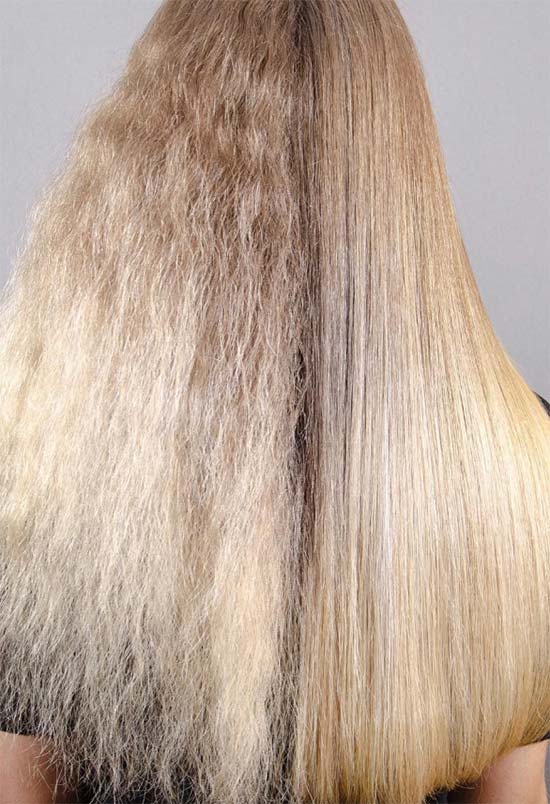
What Is the Japanese Hair Straightening Process?
The Japanese hair straightening process can take several hours, so be ready to enjoy your day at the salon with nothing important planned otherwise. The exact length is highly dependent on your hair length, type, and level of frizz/curliness. The average is around 4-5 hours, however, so be prepared. Some treatments have been known to take upwards of 8 hours. You could sleep and wake in that time period!
- Before you start, make sure your hair has been thoroughly washed with shampoo. Normally, the salon will take care of this, but it’s always good to come in clean.
- A protein-based conditioner will often be used to ensure as much protection as possible.
- The solution is added to your locks that will begin the breakdown of the protein in your hair.
- A strand test is done to determine if you’re ready for the next stage. If so, you will have your hair rinsed off the product and conditioned to protect it from the heat in the next step.
- A flat iron will be applied to your strands, effectively changing the structure of your hair. A specific temperature is used per type of hair. Usually, 180 degrees is the average. The ironing process takes quite some time as the stylist will only be straightening small 1/8-inch sections at a time.
- A neutralizer is applied, much like it is done after a perm process – the very opposite of what you’re trying to achieve here. This locks things in place.
- More heat protectants and a thermal conditioner are applied following the ironing.
- Once done, you will be placed under a hair dryer for around 40 minutes, or a blow dryer will be used to work its magic.
The whole thing is quite labor- and time-intensive, though a good stylist with a professional hand will do things much quicker than one just starting off with new clients. It’s best to know how many treatments a stylist has performed and for how many years before selecting the salon to go to.
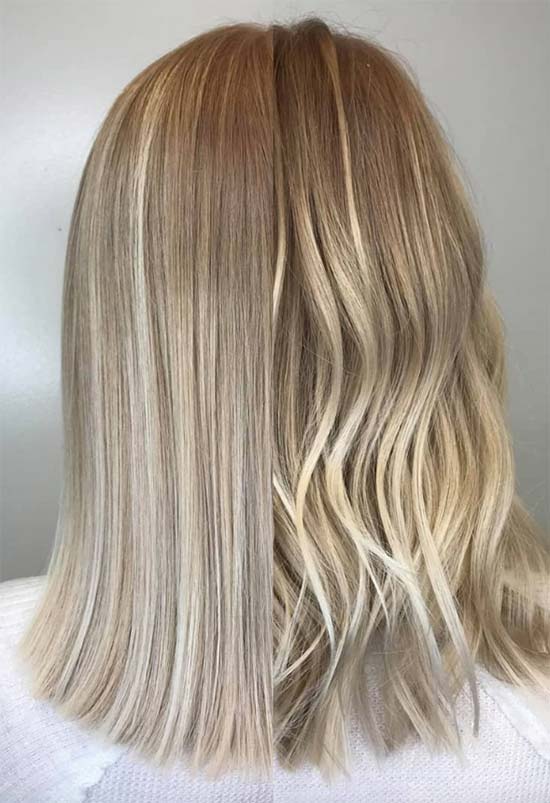
Japanese Hair Straightening Aftercare
Now that you have your perfect hair to last you at least half a year, if not over a full 12 months, you will need to care for it. Here are some dos and don’ts to ensure you provide the longevity you’ve paid for.
- DON’T wash your hair immediately. It might seem like the natural thing to do, but don’t do it. It is recommended to wait for 48h to 72h before the next wash, which is why a shower before the treatment would come in handy.
- DON’T use hairbands, clips, or any accessories that can crease the hair. Once the 48 hours are up, you can do what you will, but it’s important to keep your hair down and devoid of ornamentation for the time being. Even tucking your hair behind your ear might affect it, so just let it free.
- DO use high-quality amino acid shampoos to moisturize your hair. The treatment affects the proteins, so you need to keep feeding it to keep up the healthy appeal.
- DO use styling products that contain SPF to protect your hair from UV damage. A hat is also recommended, though not required. This is the case with or without treatment.
- DON’T take a swim in chlorinated water or enter the water with strong chemicals for at least two weeks after your treatment.
- DON’T use any hair coloring or chemical treatments for at least 2 months after your treatment or risk intense hair damage. It is recommended to just allow the hair to grow out. Don’t perm.
- DO go in for touch-ups every 4-6 months, ensuring your roots match the rest of your hair. It is highly dependent on when you notice the growth is distorting your perfect hair image.
- DO apply protein-rich conditioning products to your hair at least once a week, thus keeping its beautiful, healthy shine.
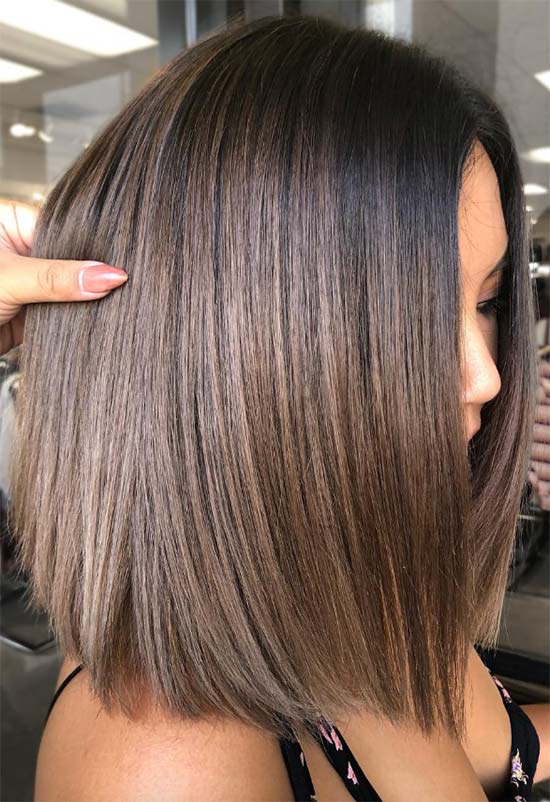
Japanese Hair Straightening Costs
Depending on where you get your hair done, a Japanese hair straightening process can cost you anywhere from $400-$900 in large cities and urban settlements, while more rural salons may offer it for as little as $150. The average is around the $400 mark. The prices differ based on popularity and brand names, but mostly on the hair length. Most salons will have their price lists set on their websites.
Photos via @martafeschuk, @kelvelin, Instagram

